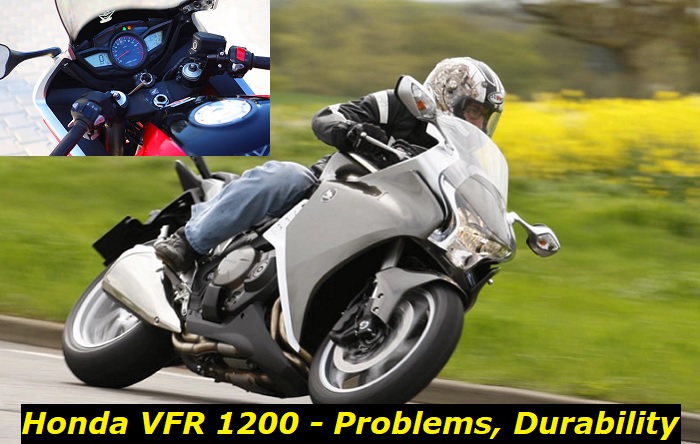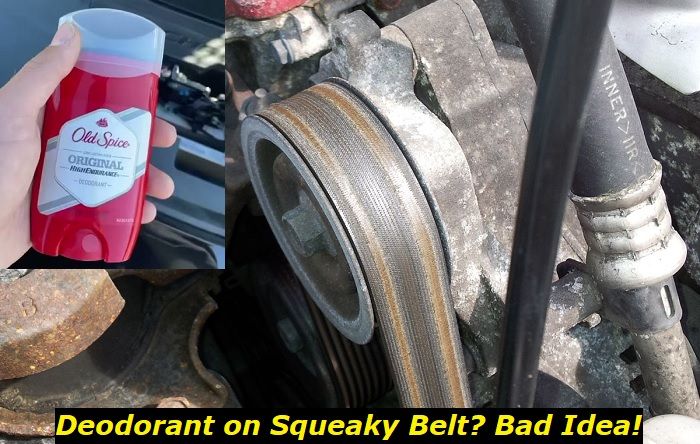The Honda VFR 1200 sport touring bike comes from a long line of motorcycles with its history going back as far as 1982 when its maker launched the VF and VFR series. The VFR 1200 was produced from 2009 to 2017 and it was here where Honda introduced several innovations in its motorcycle technology including its first adoption of a dual-clutch transmission.
On paper, the VFR 1200 had impressive engine specs. It also had a stylish, aerodynamic, and durable body showcasing a combination of Japanese, Italian, German and Spanish engineering. The motorcycle carried on the tradition of Honda in introducing innovations within the VFR line, too.
However, there were mixed reactions upon its launch mainly because many expected the VFR to get back to its racing roots. Moreover, several design choices didn't sit well with them, and further stirring the pot were issues that were realized by owners after prolonged use of the motorcycle which we will tackle here.

Most Common Problems
Honda motorcycles are generally known for their longevity. Some VFR users claim to have brought in 100,000 miles in their bikes before they required engine overhaul and major parts replacement. The average consensus, meanwhile, puts the VFR 1200's mileage around the 65,000-mile mark. However, there were many instances where problems started popping up as early as 25,000 to 40,000 miles or even before the numbers depending on the usage of the bike.
In this part, we will look at the common problems encountered by Honda VFR 1200 owners based on reviews and reports. We also offer a guide to diagnose their possible causes and the solutions that will likely get your bike running like a breeze in no time.
1. Brake Pistons Seizing
When the brake pistons seize in the Honda VFR 1200, it can cause several problems. The most obvious problem is that the brakes will not work properly. This can be extremely dangerous and should be addressed as soon as possible.
There are a few ways to diagnose the source of the problem. One way is to check the brake fluid level. If the fluid level is low, it could be an indicator that the brake pistons are seized. Another way to check is to look at the brake pads. If the pads are worn down or damaged, it could also be an indicator that the brake pistons are seized. Other sources of the issue are warped discs and binding brakes.
Once the source of the problem has been diagnosed, there are a few solutions that can be applied to fix the issue. One solution is to replace the seized brake piston. Another solution is to clean the seized piston with brake cleaner and a wire brush. This will remove any debris that may be causing the problem. If the disc is warped, it will need to be replaced. The same goes for binding brakes. A qualified mechanic will be able to fix these issues.
It is important to address the issue of seized brake pistons as soon as possible. If left unchecked, it can lead to serious problems such as accidents. By following the steps above, you can diagnose and fix the problem quickly and safely.
2. Aluminum Fillings
Many owners of pre-2011 models of the VFR 1200 have complained about aluminum fillings that tend to accumulate in their engines. If we're not mistaken, a recall a decade ago also pointed to the same issue, which could restrict the proper flow of oil within the engine. And as we all know, the lack of lubrication in this part is a disaster that's just waiting to happen.
When aluminum fillings are present in the Honda VFR 1200 engine, it is important to diagnose the source of the problem and apply solutions to fix the issue. One way to diagnose the source of the problem is to look for signs of overheating. If the engine has been running hot, there may be a buildup of aluminum oxide on the surfaces of the cylinders and pistons.
This can cause wear and tear on the engine components, and eventually lead to engine failure. Solutions that can be applied to fix this problem include replacing worn or damaged engine parts and adding cooling system additives to help prevent further corrosion.
Scratches on the piston liners can be the source of aluminum fillings, too. This can be due to the use of connecting rods that are not properly heat-treated. The result is a softer metal that wears down quickly, leaving behind aluminum filings. The only solution to this problem is to replace the pistons and connecting rods with new ones that are properly heat-treated.
Another source of aluminum fillings can be the crankshaft bearings. If these bearings wear out, they will allow metal shavings to enter the oil system. This can lead to a loss of oil pressure, engine damage, and eventually engine failure. To fix this problem, the bearings must be replaced with new ones.
If you find aluminum fillings in your Honda VFR 1200 engine, it is important to diagnose the source of the problem and apply solutions to fix the issue. By doing so, you can help prevent further damage to your engine and keep it running smoothly for years to come.
3. Spring Preload Adjustor Getting Stuck
The spring preload adjustor works by compressing or decompressing the spring inside the shock absorber. This affects the amount of preload on the spring, which in turn changes the ride height of the motorcycle. If the spring preload adjustor gets stuck, it can cause the motorcycle to sit too low or too high. This can make the bike unstable and difficult to ride.
There are a few ways to diagnose a stuck spring preload adjustor. One is to simply check the shock absorber for leaks. If there is any fluid leaking from the shock, the spring preload adjustor is likely stuck. Another way to diagnose a stuck spring preload adjustor is to measure the distance between the ground and the motorcycle frame. If the bike is sitting too low or too high, the spring preload adjustor is likely stuck.
There are a few ways to fix a stuck spring preload adjustor. One is to simply replace the shock absorber. Another way to fix a stuck spring preload adjustor is to disassemble the shock absorber and clean out any debris that may be causing the problem. Finally, if the spring preload adjustor is only slightly sticking, it may be possible to lubricate it with WD-40 or another lubricant. This will usually free up the adjustor and allow it to operate properly again.
4. Driveshaft Universal Joint Breakage
Even with adequate lubrication, a lot of users blame too much friction in the driveshaft universal joint, which results in its quick wear. If this breaks, it can cause several problems. The first and most obvious problem is that your vehicle will no longer be able to move under its power. In addition, the broken universal joint can also cause damage to other parts of the drivetrain, including the differential and the axles.
There are a few ways to diagnose a broken driveshaft universal joint. One way is to simply look at the drivetrain components for signs of damage. If you see any damaged or bent components, the universal joint is likely the source of the problem. Another way to diagnose a broken universal joint is to listen to strange noises coming from the drivetrain. If you hear a grinding or clicking noise, the universal joint is likely the source of the problem.
There are a few solutions that can be applied to fix a broken driveshaft universal joint. One solution is to simply replace the damaged universal joint with a new one. Another solution is to rebuild the damaged universal joint using special tools and techniques. Lastly, if the damage is severe enough, it may be necessary to replace the entire driveshaft assembly. Whichever solution you choose, it's important to have the work done by a qualified mechanic to ensure that it's done properly.
What to Check and Maintain
Some Honda VFR 1200 last longer than others. The key is always proper maintenance and care for the motorcycle on the part of the owner.
With that, the problems shown here can still be avoided by following these tips:
- Check your engine regularly. This includes checking the oil level and quality, as well as the coolant level and condition.
- Inspect your suspension regularly. This means checking for leaks, cracks, or other damage.
- Check your driveshaft regularly. This includes inspecting the u-joints and looking for any signs of wear or damage.
- Be sure to follow the manufacturer's recommended maintenance schedule for your specific model of the Honda VFR 1200 motorcycle.
- If you notice any unusual noises or vibrations coming from your motorcycle, have it checked out by a qualified mechanic as soon as possible. These could be signs of serious problems developing.
By following these simple tips, you can help avoid major engine, suspension, or driveshaft problems with your Honda VFR 1200 motorcycle. Be sure to stay on top of regular maintenance and inspect your bike carefully for any signs of trouble. If you have any concerns, don't hesitate to take it to a qualified mechanic for a professional opinion and servicing.
About the authors
The CarAraC research team is composed of seasoned auto mechanics and automotive industry professionals, including individuals with advanced degrees and certifications in their field. Our team members boast prestigious credentials, reflecting their extensive knowledge and skills. These qualifications include: IMI: Institute of the Motor Industry, ASE-Certified Master Automobile Technicians; Coventry University, Graduate of MA in Automotive Journalism; Politecnico di Torino, Italy, MS Automotive Engineering; Ss. Cyril and Methodius University in Skopje, Mechanical University in Skopje; TOC Automotive College; DHA Suffa University, Department of Mechanical Engineering






Add comment